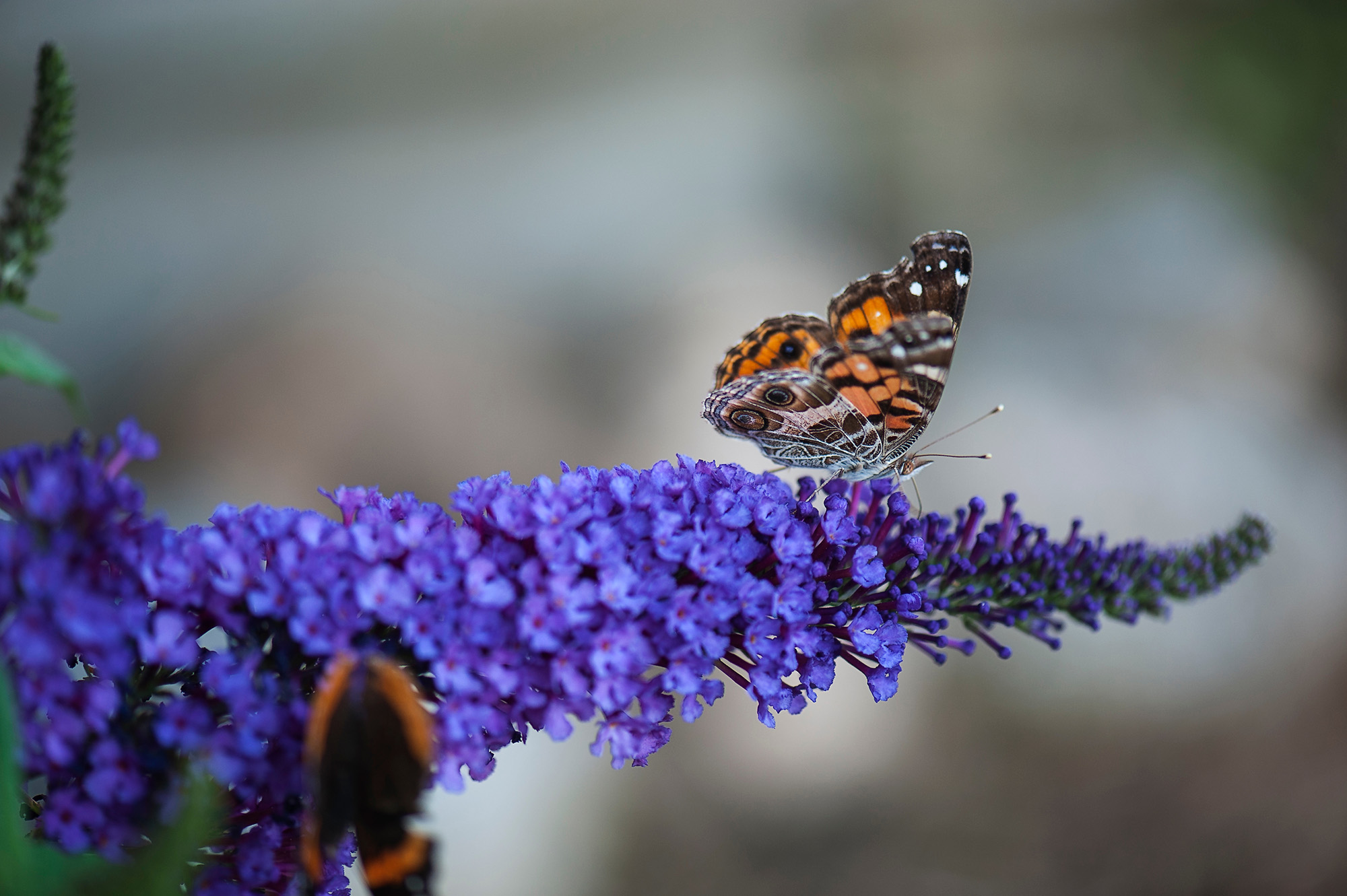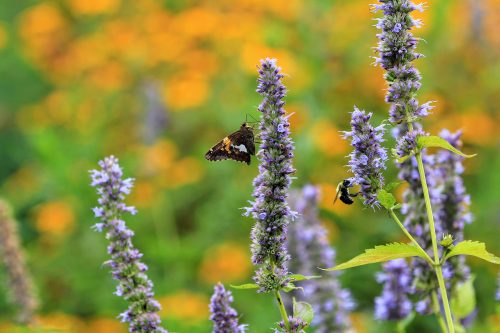- © 2025 Annapolis Home Magazine
- All Rights Reserved
By Kymberly Taylor

When I read that every perennial garden needs a butterfly bush, I had a splendid vision of fragrant conical blooms reaching for the sky, with hundreds of butterflies dipping and diving. I noticed a magnificent specimen while living in my parents’ 19th-century farmhouse one summer and found it the most popular plant, with butterflies and bees in constant rapture.
Without visitors, my butterfly bush showed me another side. It may have been a trick of the late afternoon sun—and it is rumored that the farmhouse I lived in is haunted—but its dancing blossoms seemed to brighten before my eyes and looked mischievous, as if ready to play.
Up close, I saw that each flower head blooms gradually. Hundreds of individual tubular flowers covering a single light pink cone open, one by one. Dark pink hues begin at the base and progress slowly to the tip. A friend who noticed this dramatic progression of color cleverly called this phenomenon “Nature’s Ombre.” (Ombre is a special hair coloring technique where hair transitions from a darker color at the roots to a lighter color at the ends.) What’s more, the closed blooms seemed poised with an elegant discipline, as if to remind me to slow down and enjoy its process.
A deciduous shrub native to China, the butterfly bush is a sprawling perennial that can grow up to 15 feet tall. Its Latin name is Buddleja davidii, named after Reverend Adam Buddle, an 18th-century English botanist. Butterfly bushes are indeed lovely; they bloom from mid-summer through September and certainly attract bees and butterflies. If planted in full sun, they grow quickly, reaching maturity in one to two years, and reproduce rapidly. Nicknamed the “bombsite plant,” the butterfly bush can grow in especially tough conditions and was spotted thriving in war-torn lands shortly after World War II in the UK.

‘Blue Fortune’ resulted from a cross between A. rugosa and A. foeniculum. Bred and selected by Gert Fortgens of the Arboretum Trompenburg in Rotterdam, Netherlands, ‘Blue Fortune’ was a 2004 Great Plant Picks award winner.
However, when it comes to native plants and biodiversity, its infectious personality may be problematic. Today, the USDA classifies Buddleja davidii as a noxious weed. Professionals, including horticulturalists and entomologists, consider them invasive and not the best choice for our gardens. A recent study by Longwood Gardens found that each single flower head or panicle has 40,000 seeds. Lightweight and winged, they travel on the wind and germinate easily, maturing swiftly to create colonies. Researchers at the University of Maryland Extension note that butterfly bushes “take over.” Laden with nectar, they seduce pollinators, distracting them, in fact, from other native co-flowering species. This, in turn, makes it harder for natives to reproduce, and their populations could die out, explains Anahí Espíndola, Assistant Professor, Department of Entomology, University of Maryland, College Park.
If the butterfly bush were just a pretty garden shrub, it would be less of a concern, write Lillia Schmidt and Susan Charkes in an article for Brandywine Conservancy. However, the butterfly bush does not support butterfly larvae. Butterflies will not lay their eggs on its leaves and need native plants for this crucial stage of life. Eggs mature into caterpillars. Without caterpillars, there will be no adult butterflies. Without caterpillars, birds will not survive, they warn.
I understood this fragile sequence. Even so, I clung to my vision. How could one butterfly bush do any real harm? A call to Jay Graham of Moody Graham Landscape Architects changed my mind. He reminded me about our ecosystem’s vibrating matrix of interdependent life forms, winged and otherwise. Every single gardener matters, as does every single plant. As my heart sank and reality set in, he assured me that native plants were terrific alternatives. He recommends Agastache ‘Blue Fortune,’ a perennial in the Hyssop family. “I have it in my garden and have seen an incredible number of butterflies,” he says.
He notes that it is deer-resistant, low maintenance, and tolerates heat and drought once established. And like the butterfly bush, it is fast-growing and blooms from mid-summer to early fall. Its foliage smells distinctly like black licorice when crushed, thus its common name, Anise Hyssop. Hummingbirds, bees, and many other pollinators will also dine on these nectar-rich blooms. I also learned there are less invasive hybrid butterfly bushes bred to produce fewer seeds. One in particular is ‘Pugster Pinker,’ a dwarf variety suggested by landscape architect Ben Rankin of Walnut Hill Landscape Company.
It’s good to have these choices. Every garden may not need a butterfly bush, but it certainly needs butterflies. And I need butterflies to remind me about lightness and beauty, about the strong and good forces in the natural world, especially during turbulent times.
Note: If you already have a butterfly bush, deadhead flowers to inhibit seed distribution.
Blazing Star (Liatris)
Purple Coneflower (Echinacea purpurea)
Joe-Pye Weed (Eutrochium) species
Milkweed (Asclepias) species
© Annapolis Home Magazine
Vol. 16, No. 3 2025